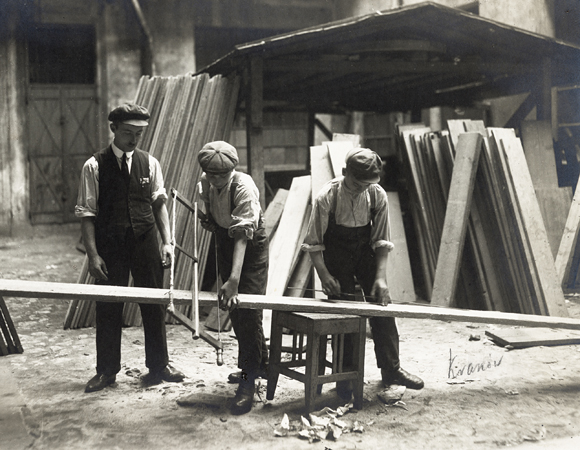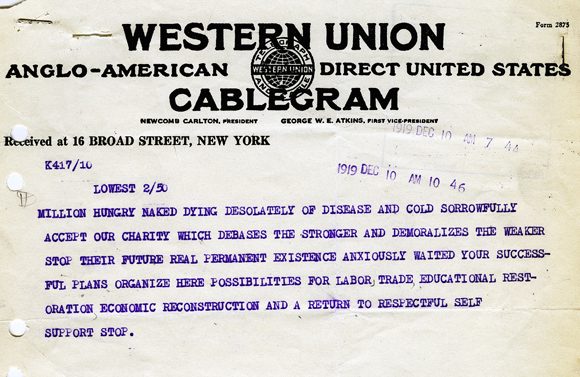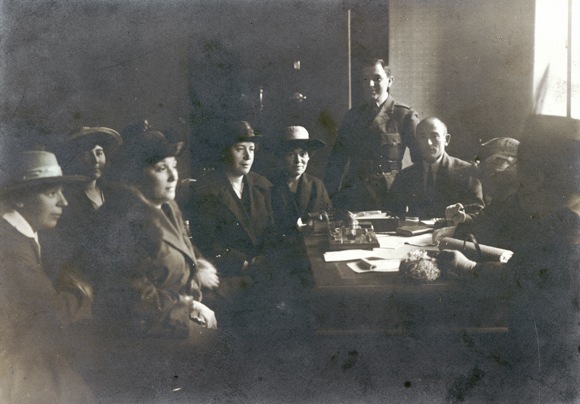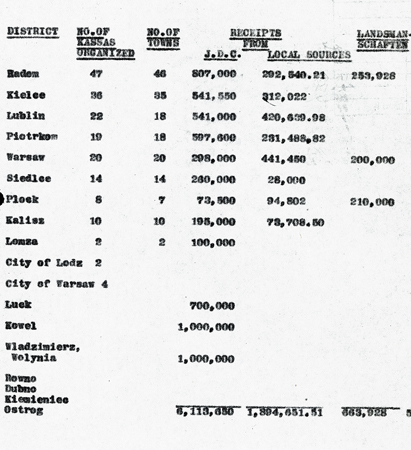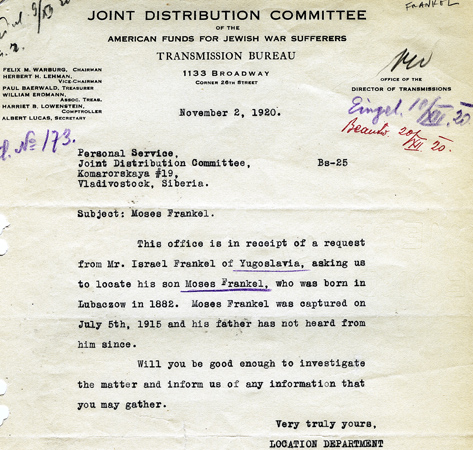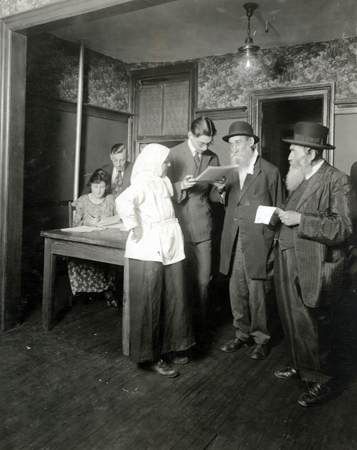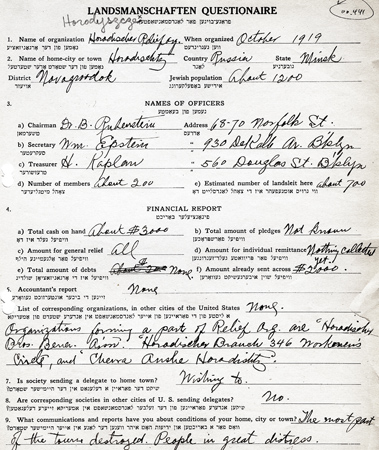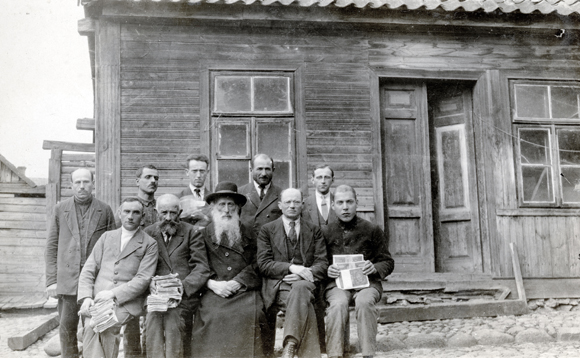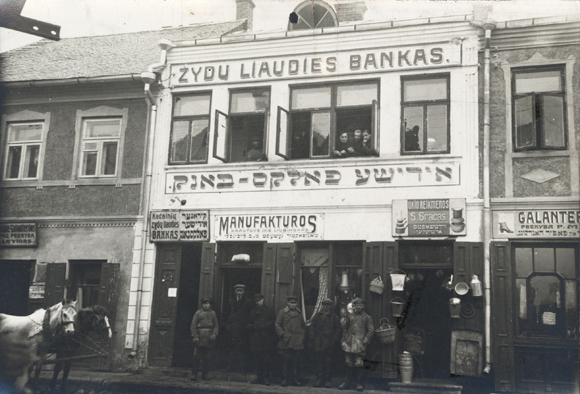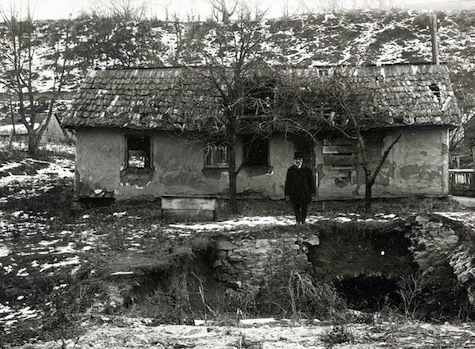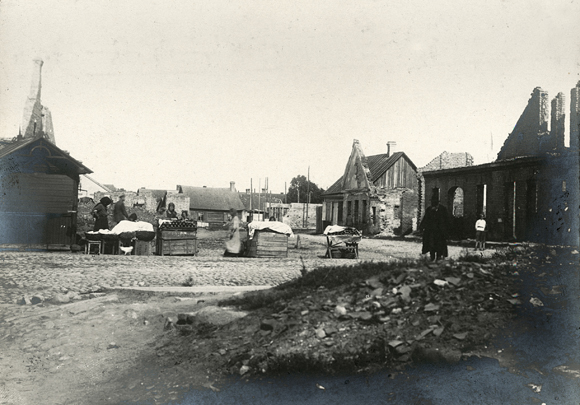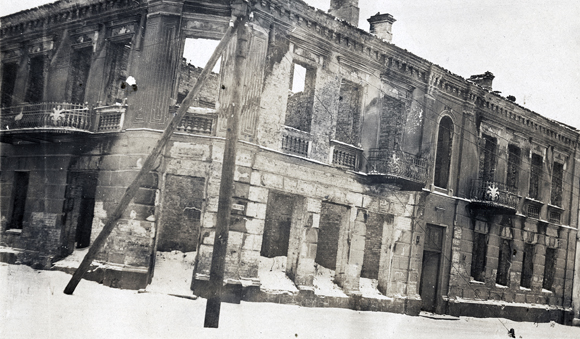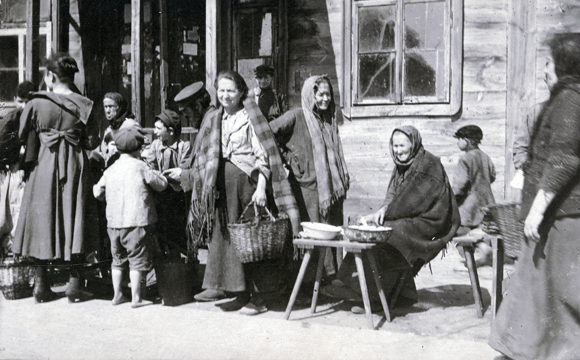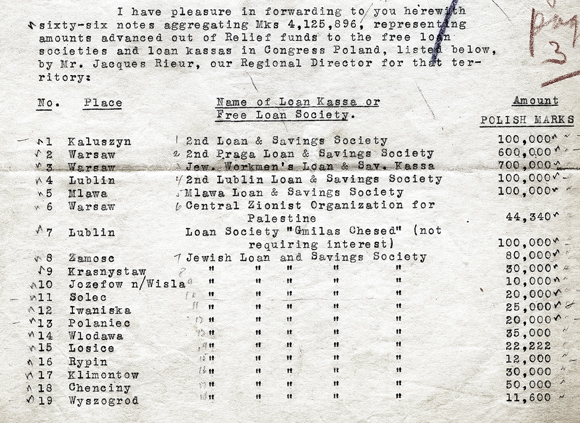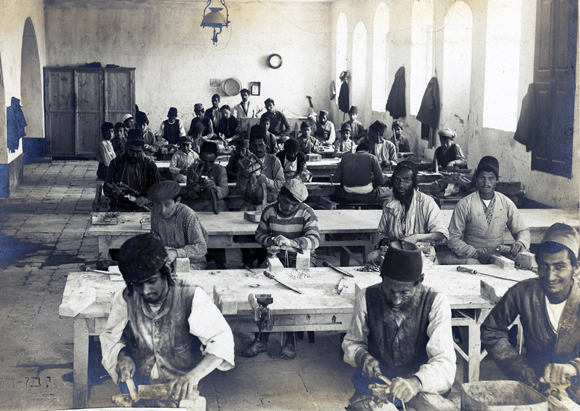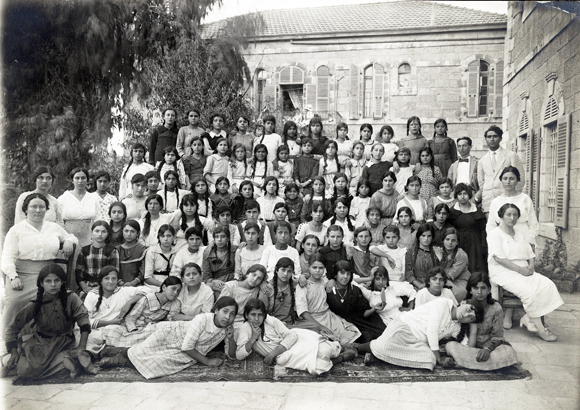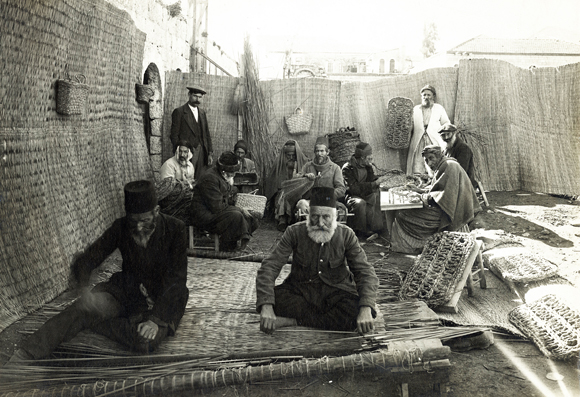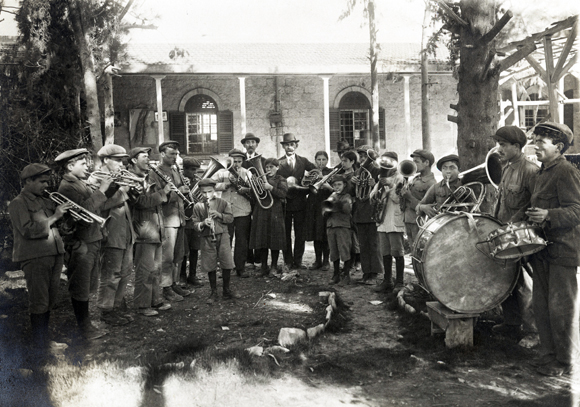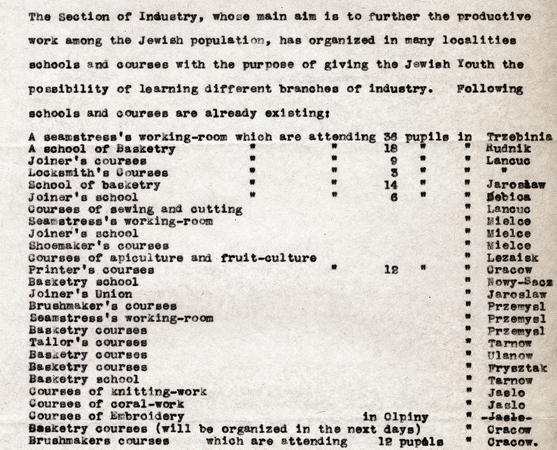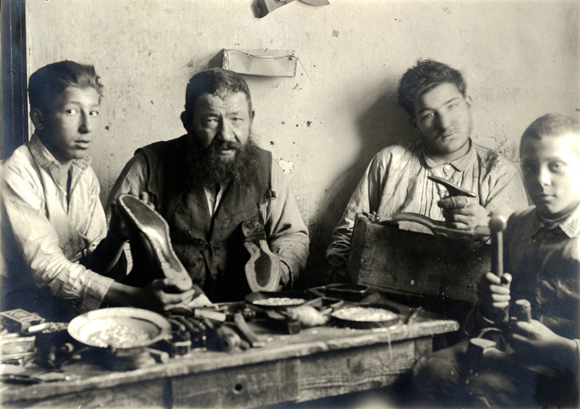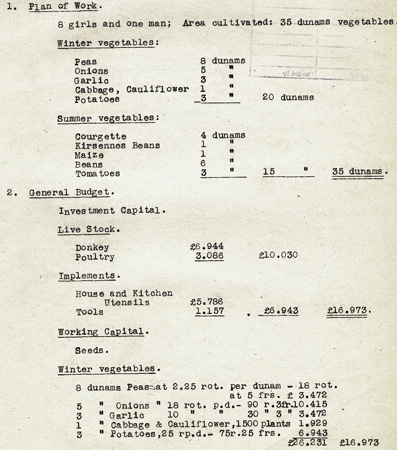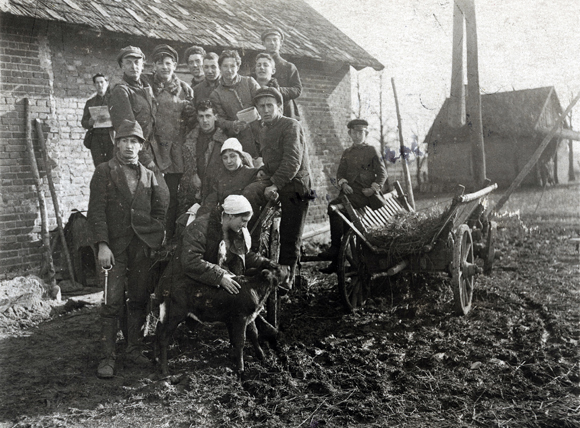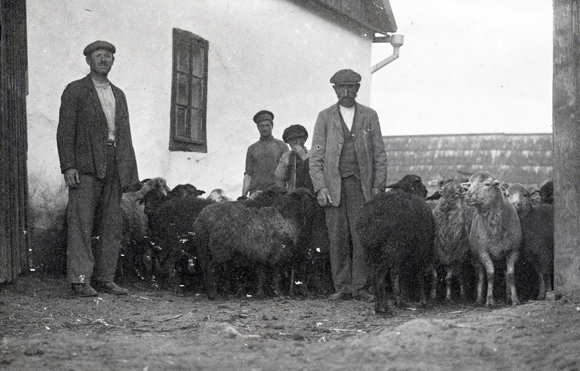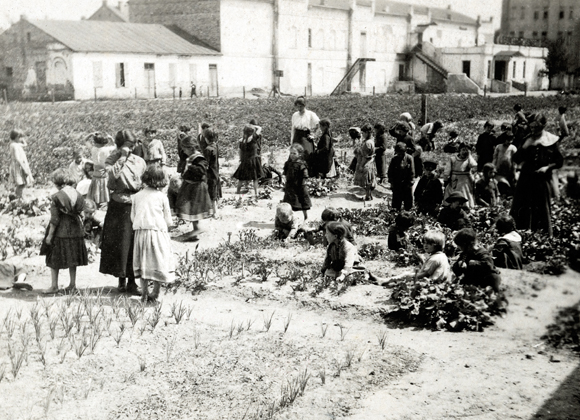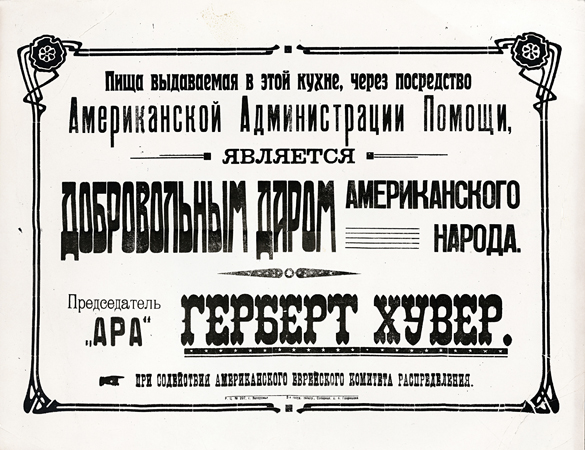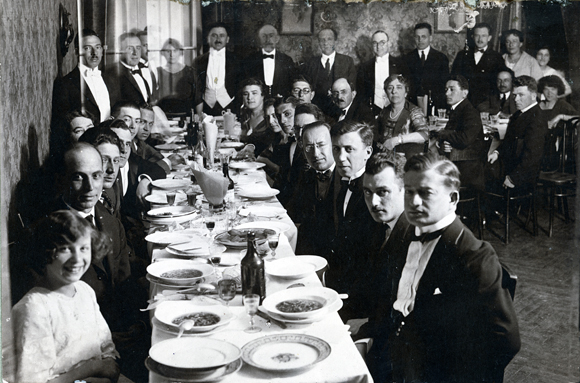Moving Forward: A Constructive Approach
A Joint Effort: JDC's Beginnings, 1914-1921
Moving Forward: A Constructive Approach
JDC set a formal deadline (July 1921) for ending ''palliative relief.'' Much earlier, an August 1919 report summarized new objectives: "(1) to help develop and renew Jewish morale and the spirit of self-help...; (2) to help build up cultural, benevolent and technical institutions;" and "(3)...to help integrate the various divergent groups, organizations and institutions to a common purpose." During those two years, groundbreaking initiatives were tried whenever possible. AR 19-21, File 4.
A Fully Realized Future
After the war, JDC staff and lay leaders began discussing the right next steps. Looking for ways to spark Jewish self-sufficiency and rebuild healthy communities, they redirected their support to loan services, vocational training, and reconstruction. Funding for charitable relief would increasingly depend on local sources and other interested parties.
Handle with Care!
Peace enabled JDC to expand its more personal services. The Transmission Department now included packages for loved ones and friends. A Location/Personal Service Department helped connect families torn apart by war. A Landsmanschaften Department helped immigrant groups provide for their former towns. When JDCs budgets were lean, these programs became even more crucial.
Laying Foundations
Beginning in 1920, JDC began laying the groundwork for a major rebuilding program in Eastern Europe. It helped found a central bank in Poland and local building and loan associations everywhere to provide loans to homeowners. To make best use of available funds, the first projects undertaken were repairs.
A Leg Up
JDC helped tradespeople start new businesses; established free loan associations to back artisans and working-folks cooperatives; provided tools and materials for carpenters, locksmiths, shoemakers, and other skilled workers; and supported programs for them to develop and hone their skills.
JDC and the Emerging Yishuv
In the post-war years, the Jewish community in Palestine transitioned from dependency on outside contributions towards self-sufficiency. JDC played a major role in making this possible through its training programs and loan associations.
Building Livelihoods in Eastern Europe
JDC helped reestablish or create new options for borrowing money. In Bessarabia, JDC loaned funds to establish a network of 37 cooperatives. In turn, each of these lent money to thousands of members. Repaid loans could then be used to enable more people to start afresh.
Growing Opportunities
Opportunities to pursue agriculture and even to own land now opened up for Jews. Farming provided a viable income and a source of sufficient food. Many also saw it as preparation for a move to Palestine. JDC supported agricultural training for interested city dwellers and helped spur the formation of Jewish agricultural colonies.
A New Era
After less than seven years of activity, JDC had transformed beyond all original expectations, from the spending arm of a loose-knit coalition of committees into an innovative, adaptable international agency. Its rescue, relief, and reconstruction work would continue through untold crises ahead.

